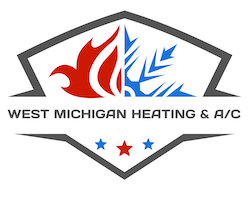
You shouldn’t need to give up comfort or spend a lot to keep your residence at a pleasant setting during summer weather.
But what is the best setting, exactly? We go over suggestions from energy specialists so you can determine the best temp for your house.
Here’s what we recommend for the most energy-efficient setting for air conditioning in Hudsonville.
Recommended Thermostat Settings for Summer
Most families find using the thermostat at 72-73 degrees provides ideal comfort. However, if there’s a big difference between your inside and outdoor temperatures, your AC bills will be bigger.
These are our suggestions based on the U.S. Department of Energy (DOE) and ENERGY STAR®.
While at home: 78 degrees. While that seems warm, there are ways you can keep your residence cool without having the air conditioning on all the time.
Keeping windows and window treatments shut during the day keeps cool air where it needs to be—inside. Some window treatments, such as honeycomb shades or plantation shutters, are made to give more insulation and better energy efficiency.
If you have ceiling fans in your home, the DOE says you can increase thermostat settings about 4 degrees hotter without sacrificing comfort. That’s because they freshen by a windchill effect. Since they cool people, not spaces, shut them off when you exit a room.
If 78 degrees still seems too warm on the surface, try conducting a trial for approximately a week. Start by raising your temperature to 78 degrees while you’re at your house. Then, progressively turn it down while adhering to the suggestions above. You could be surprised at how cool you feel at a warmer temperature setting.
While away: 88 degrees. There’s no rationale for keeping the air conditioning running all day while your house is vacant. Moving the setting 7–10 degrees hotter can save you an estimated 5–15% on your electrical expenses, according to the DOE.
When you arrive home, don’t be tempted to switch your thermostat colder than 78 to cool your residence faster. This isn’t effective and often results in a bigger electrical cost.
A programmable thermostat is a good way to keep your temp in check, but it requires setting programs. If you don’t utilize programs, you run the risk of forgetting to move the set temperature when you take off.
If you need a handy fix, think over installing a smart thermostat. This thermostat connects with your phone, so it knows when you’re at your house and when you’re away. Then it automatically adjusts temperature settings for the best savings. How much exactly? About $180 each year on heating and cooling, according to ENERGY STAR.
Another advantage of using a smart thermostat? You can use your phone to keep an eye on and change temperature settings from almost anywhere.
While sleeping: Around 70 degrees. While ENERGY STAR advises 82 degrees, that could be unpleasant for the majority of families. The majority of people sleep better when their bedroom is cold, so that’s why the National Sleep Foundation recommends 60–67 degrees. But that could be too cold, based on your clothing and blanket preference.
We recommend trying a comparable test over a week, moving your temperature higher and steadily lowering it to determine the best temperature for your house. On cool nights, you might discover keeping windows open at night and relying on a ceiling fan is a better idea than running the air conditioner.
More Approaches to Conserve Energy During Hot Weather
There are additional methods you can spend less money on AC bills throughout the summer.
- Get an energy-efficient air conditioning system. Central air conditioners only work for about 12–15 years and become less efficient as they become older. An upgraded air conditioner can keep your residence comfier while keeping electricity expenses small.
- Schedule annual air conditioner maintenance. Routine air conditioner maintenance keeps your system running like it should and may help it work at greater efficiency. It can also help extend its life cycle, since it enables technicians to find little issues before they cause a major meltdown.
- Switch air filters frequently. Use manufacturer instructions for changing your air filter. A dusty filter can cause your system to short cycle, or switch on and off too frequently, and drive up your electrical.
- Check attic insulation levels. Nearly 90% of residences in the U.S. don’t have adequate insulation, according to the Insulation Institute. Most southern climates need 13–14” of attic insulation, while northern climates require 16–18”.
- Have your ductwork inspected. Ductwork that has come apart over time can leak cool air into your attic, walls or crawl space. This can create major comfort problems in your home, including hot and cold spots.
- Seal cracks, doors and windows. Keep hot air in its place by closing holes. You can also caulk or weather strip doors to keep more conditioned air within your home.
Use Less Energy During Warm Weather with West Michigan Heating & Air Conditioning Services
If you need to save more energy during hot weather, our West Michigan Heating & Air Conditioning Services professionals can assist you. Get in touch with us at (616) 319-1436 or contact us online for extra information about our energy-saving cooling products.


